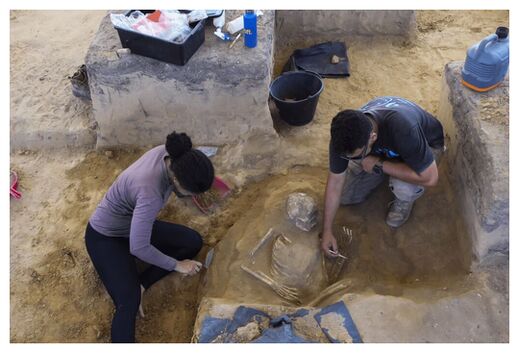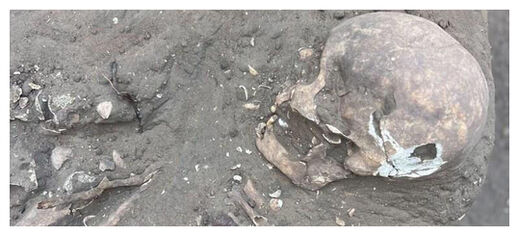Scientists have long debated precisely when and how humans arrived in and populated the Americas from Asia.
The archaeological site is much older than the oldest documented "pre-sambaqui" settlement found so far in the region, dating back 6,600 years. The findings suggest that people settled in this part of modern-day Brazil at least 1,400 years earlier than previously thought.
However, the artifacts have only been dated based on their depth, and confirmatory isotopic analysis has yet to be performed.
The lead archaeologist on the dig, Wellington Lage said the find might "rewrite the history of human settlement in Brazil".
The archaeological site was found when a team of construction workers came across human bones and pottery shards while planning to build a new apartment complex in the coastal city.
Covered in tropical vegetation and bordered by the urban sprawl of Sao Luis, the capital of Maranhao state, the six-hectare (15-acre) plot was known as Rosane's Farm, for the daughter of a late local landholder.
Before the construction of a new apartment building, the 70-year-old Wellington Lage's company, "W Lage Arqueologia," was hired by the massive Brazilian construction company MRV to conduct a site survey. Researching the site, Lage discovered that bones were recovered in the 1970s, and part of a human jawbone was found in 1991.
Lage and his team soon found much more: a flood of stone tools, ceramic shards, decorated shells, and bones.
In four years of digging, they discovered 43 human skeletons and more than 100,000 artifacts, according to Brazil's Institute for National Historical and Artistic Heritage [IPHAN], which described the discovery as "grandiose."
Lage said that even after four years of digging, his 27-strong team, including archaeologists, chemists, a historian, and a documentary filmmaker, has "barely scratched the surface." The team of researchers plans to catalog each of the artifacts before they publish their findings, and the recovered items are exhibited to the public.

Four distinct eras of occupation at the site found
The upper archaeological layer at the site contained numerous Tupinamba artifacts, which belonged to one of the various Tupi ethnic groups that lived in present-day Brazil before being conquered by Portuguese colonial settlers in the early seventeenth century.
The team discovered Amazonian artifacts beneath the top layer, followed by a "sambaqui mound," which was made up of discarded bones, shells, and pottery. It was beneath this mound, at around two meters (6.5 ft) deep, ceramics were found dating to "8,000 to 9,000 years old." This early date precedes the previous oldest mound in the region, which Lage told AFP reporters, "dates to 6,600 years ago."
"This could completely change the history of not just the region but all of Brazil," he told the AFP news agency.
Archaeologist Arkley Bandeira of the Federal University of Maranhao, which is building a lab and museum to house the artifacts with funding from MRV, said in a statement that the site could provide valuable new insights into the culture and history of ancient peoples who have vanished.




Reader Comments
to our Newsletter